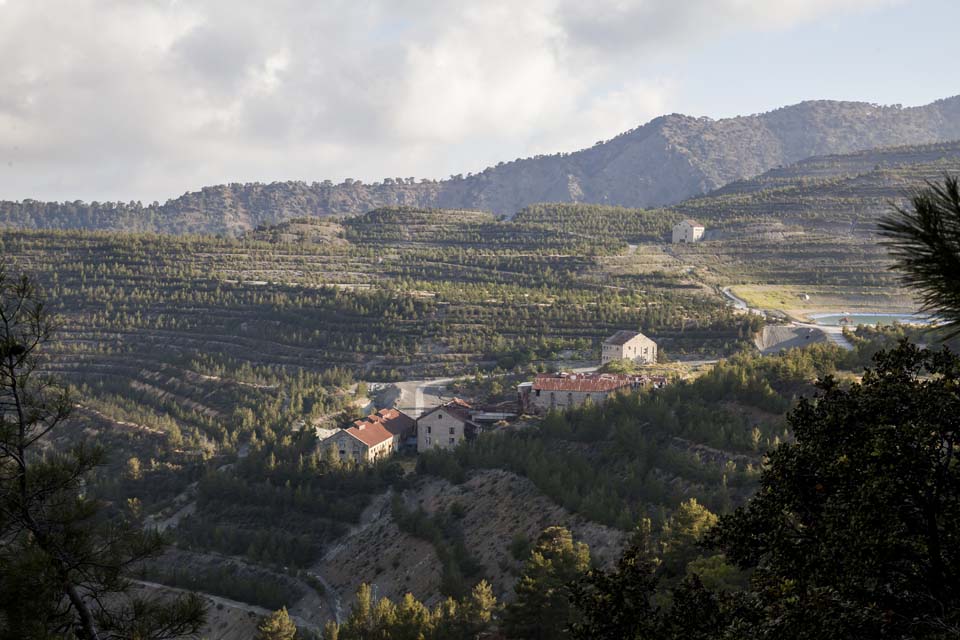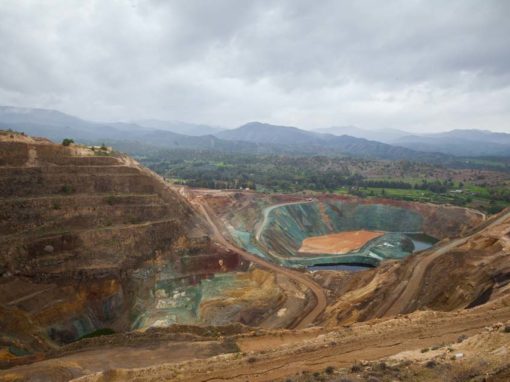Amiantos (Asbestos) Mine
In addition to copper, the metal that Cyprus has long been famous for (and named after), another mineral has make its mark in the history of the island. Asbestos. Since antiquity, especially since Roman and Classical times, Cyprus has been known for the presence of Asbestos in today’s Asian region. The largest Asbestos mine in Europe and, one of the most important ones in the world is this mine, in Amiantos Village. Asbestos would form on the surface of the ground and it caused a great interest in ancient times. Asbestos was used to make burial shrouds, shoes, fuses for lamps, protective covers for homes and churches and clothing for the locals.
Asbestos was known then as vamvakopetra (cottonstone). In the early days, the organised production of asbestos started in 1904. From then until its closing in 1988 it is estimated that a million tonnes on asbestos fibres were mined and 130 million tonnes of asbestos stone. The Cypriot asbestos mines were profitable up until 1982, when the international campaign against asbestos use, caused a substantial decrease in the demand and hence the price of asbestos, resulting in financial problems for the company. Since the ore is mined from the ground, changes in the morphology and vegetation of the site occurred. Thus, the long-term operation of the mine by the surface exploitation method inevitably affected the natural environment of the area and had direct and indirect effects on the wider environment. Upon the termination of mining operations, the state undertook the task of rehabilitation under the guidance of a multidisciplinary team.
Location
Geology
Lake at the Asbestos mine
In a rough and forbidden area in Troodos, near the asbestos mines and after crossing the path from the camp area, one will encounter the lake of Almyrolivados. The route presents difficulties with abrupt changes in landscape morphology and steep climbs
Pillow lavas (Koronia)
These are the igneous rocks that cover the Adelphi forest area, the forest that geologically belongs to the known Troodos ophiolithic system that formed in the Upper Cretaceous about 90 million years ago. These rocks are volcanic rocks of diabase veins
Skouriotissa Mines
The mining history of Cyprus has linked its name (Cyprus) to copper (Cuprous). Copper production in Cyprus began before 3000 BC. and vertically integrated. The exploitation of the copper ore of Skouriotissa is lost in the depths of the centuries, possi
Sulphur Springs
The Sulphur Springs of Kalopanayiotis are located near the banks of the river Setrachos, next to the Venetian bridge. The healing properties of its sulphur-containing waters have been known since antiquity. In fact, at the monastery of Agios Ioannis La
Troodos Geopark
In 2015, the Troodos mountain range was selected by UNESCO and proclaimed a Geopark, due to the due to its unique geological heritage, which is derived from the particular genesis and elevation of the mountain range. The Troodos Geopark is located in t













